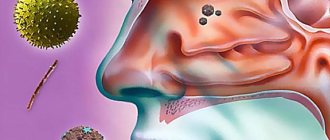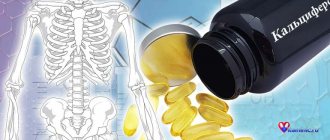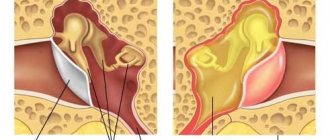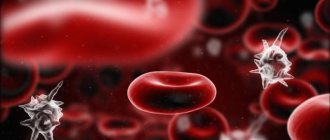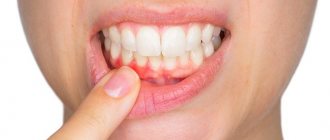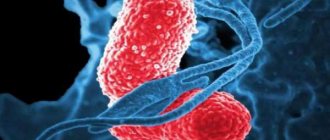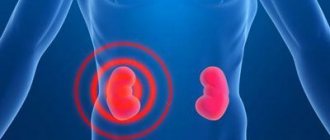Pericarditis is an inflammation of the pericardium, the outer lining of the heart that separates it from the other organs of the chest. The pericardium consists of two leaves (layers), inner and outer. Between them there is normally a small amount of fluid, which facilitates their displacement relative to each other during heart contractions.
Inflammation of the pericardium can have various causes. Most often, this condition is secondary, that is, it is a complication of other diseases. There are several forms of pericarditis, differing in symptoms and treatment. The manifestations and symptoms of this disease are varied. Often it is not diagnosed immediately. Suspicion of pericardial inflammation is the basis for referring the patient for treatment to a cardiologist.
Development mechanism
The speed of development ranges from several hours to several days. The faster the inflammation develops, the greater the likelihood of acute heart failure and cardiac tamponade. The average time for the onset of the inflammatory reaction from the development of the underlying disease is 1-2 weeks .
Pericarditis affects people of all ages, men more often than women. The age of most patients is from 20 to 50 years.
Pathogenesis
At the initial stages, inflammatory fluid sweats into the pericardial cavity. Due to the low extensibility of the serous membrane, the pressure in the cavity increases and is accompanied by compression of the heart. The ventricular chambers are unable to completely relax during diastole.
Incomplete relaxation stimulates an increase in pressure in the cardiac chambers and an increase in the shock force of the ventricles . Further exudation further increases the load on the myocardium. With rapid and pronounced accumulation of fluid, acute heart failure and cardiac arrest (tamponade) develop.
The further course is determined by the subsidence of the inflammatory process. The liquid is gradually adsorbed by the leaves of the pericardial sac, so its amount in the cavity decreases. The fibrin fibers remaining in the pathological focus contribute to the adhesion of the pericardial layers and their subsequent fusion (adhesive process).
Does it affect hemodynamics?
The effect on hemodynamics is expressed in compression of the heart muscle . In this case, the atria experience less pressure than the ventricles due to the low force of contractions. Inadequate relaxation of the ventricles leads to an increase in their striking force while maintaining the original cardiac output.
Violation of diastole causes first an increase and then a decrease in blood pressure. Congestion develops in the systemic circulation, resulting in heart failure.
Causes
Determining the cause of the disease is usually difficult. Most cases are described as idiopathic, that is, occurring for an unknown reason, or viral . The virus itself, which led to the development of inflammation, usually cannot be isolated.
Other possible causes of pericardial inflammation:
- Bacterial infection, including tuberculosis.
- Inflammatory diseases: scleroderma, rheumatoid arthritis, lupus.
- Metabolic diseases: renal failure, hypothyroidism, hypercholesterolemia (increased cholesterol in the blood).
- Cardiovascular diseases: myocardial infarction, aortic dissection, Dressler's syndrome (a complication that occurs weeks after a heart attack).
- Other causes include neoplasms, injuries, drug use or medications (for example, isoniazid, diphenin, immunosuppressants), medical errors during manipulations in the mediastinum, HIV.
The cause of pericarditis in infants is most often a generalized staphylococcal or streptococcal infection, and in older children - inflammatory diseases or a viral infection.
Causes of pericarditis
The most common pericarditis is caused by Escherichia coli, meningococci, streptococci, pneumococci and staphylococci . Pericarditis caused by other representatives of the microflora is much less common, but they are also noted in statistical data. For example, tuberculosis contributes to the occurrence of pericarditis in 6 cases out of 100. In approximately 1% of patients, pericarditis is caused by parasites and fungal diseases living in the body. The cause of the development of idiopathic (non-specific) pericarditis can be influenza pathogens of group A or B, ECHO viruses or Coxsackie enteroviruses of group A or B, which multiply rapidly in the gastrointestinal tract. There are also metabolic causes of pericarditis. These are thyrotoxicosis, Dressler's syndrome, myxedema, gout, chronic renal failure. Rheumatism can lead to pericarditis, although in recent years cases of rheumatic pericarditis have been reported very rarely. But inflammation of the visceral layer, caused by collagenosis or systemic lupus erythematosus, began to be diagnosed more often. Often, pericarditis occurs as a consequence of drug allergies. It occurs as a result of an allergic lesion of the pericardial sac.
Frequency of occurrence by etiology
Infectious pericarditis (60% of cases):
- Viral – 20%;
- Bacterial - 16.1%;
- Rheumatic – 8-10%;
- Septic – 2.9%;
- Fungal – 2%;
- Tuberculosis – 2%;
- Protozoal – 5%;
- Syphilitic - 1-2%.
Non-infectious pericarditis (40% of cases):
- Post-infarction – 10.1%;
- Postoperative – 7%;
- For connective tissue diseases – 7-10%;
- Traumatic – 4%;
- Allergic – 3-4%;
- Radiation – less than 1%;
- For blood diseases – 2%;
- Medicinal – 1.4%;
- Idiopathic – 1-2%.
The incidence of the disease in children is 5%, of which 80% are dry and 20% are exudative. The criteria for diagnosis and treatment tactics do not differ from those in adults.
A detailed classification of pericarditis by etiology and course is presented in this article.
In adults and children
The following types of pericarditis predominate in different age groups.
In newborns:
- Viral (60-70%);
- Bacterial (22%).
In children:
- Viral (55-60%);
- Rheumatic (12%);
- Postoperative (5.5-7%);
- Bacterial (5%).
Learn more about pericarditis in children from a separate publication.
In adults:
- Viral (18-23%);
- Post-infarction (15%);
- Rheumatic (up to 10%);
- Pericarditis in connective tissue diseases (7-10%).
The course of particular types of pericarditis
Classification of pericarditis is carried out:
- According to clinical manifestation: fibrinous pericarditis (dry) and exudative (effusion);
- According to the nature of the course: acute and chronic.
Acute fibrinous pericarditis
Acute fibrinous pericarditis (if it is an independent disease) has a benign course. Its treatment does not cause difficulties and ends after one or two months with a favorable outcome (not the slightest trace remains of the disease). It has a viral etiology and occurs due to hypothermia of the body against the background of acute respiratory diseases. Young people are more susceptible to the disease. It is characterized by the sudden onset of pain in the heart area (behind the breastbone), accompanied by a slight increase in temperature.
Acute infectious pericarditis
Acute pericarditis that occurs against the background of infectious diseases (for example, pneumonia) occurs without pronounced symptoms. This often makes it difficult to diagnose, which leads to the development of adhesive chronic pericarditis with the formation of a “shell heart” and adhesions. This form of the disease is dangerous because a complication may develop in the form of purulent pericarditis, which can only be treated with surgical methods.
Exudative pericarditis
Effusion pericarditis (exudative) most often occurs in a subacute or chronic form, with relapses and accumulation of a large amount of fluid in the pericardial cavity. Clinically, it manifests itself in the form of adhesive (adhesive) and compressive (constrictive) pericarditis:
- Adhesive pericarditis is characterized by rough extrapericardial fusion or deposition of lime in scar tissue with the formation of an armored heart. In this case, the amplitude of heart contractions has no restrictions; sinus tachycardia and a sharp muffling of heart sounds are often observed. In some cases, the disease may be asymptomatic.
- Constrictive (compressive) pericarditis is more often detected in males. With the development of this form of the disease, compression of the heart occurs, which causes a decrease in blood filling in cardiac diastole. The vena cava is also compressed, resulting in decreased blood flow to the heart. Chronic heart failure develops. The danger of constrictive pericarditis is that the inflammatory process can spread to the liver capsule and lead to its thickening. This causes compression of the hepatic veins. Pick's pseudocirrhosis occurs. In some cases, large volumes of effusion compress the left lung, leading to bronchial breathing in the area of the angle of the left scapula.
Exudative purulent pericarditis
Exudative purulent pericarditis is caused by coccal pyogenic microflora, which enters the pericardial cavity hematogenously. Most often it occurs in an acute, severe form, accompanied by intoxication of the body and elevated temperature, symptoms of cardiac tamponade in acute and subacute forms. A purulent course often accompanies traumatic pericarditis. In this case, fluid accumulates in large quantities in the pericardial cavity. Only timely diagnosis and surgery can save the life of a patient diagnosed with purulent pericarditis. The highest mortality rate is observed with purulent pericarditis, which develops very quickly. Drug therapy for this form of the disease is not effective.
Hemorrhagic pericarditis
Pericarditis can also develop against the background of cancer. Cancerous tumors metastasize to the visceral layers of the cardiac membrane. This causes hemorrhagic pericarditis. It is distinguished from other species by the presence of bloody exudate. It often develops against the background of renal failure.
Tuberculous pericarditis
When the tuberculosis bacillus penetrates the pericardial cavity by lymphogenous route or by direct transfer from the affected areas of the pleura, lungs and bronchi, tuberculous pericarditis develops. It is characterized by a slow course, accompanied by acute pain in the initial period. As fluid accumulates, the pain subsides, but returns again with a significant accumulation of purulent contents. Shortness of breath is added to the dull, pressing pain. Treatment uses glucocorticoid steroids, protease inhibitors, and penicillin drugs to inhibit collagen synthesis.
Pericarditis in children
Pericarditis in children usually develops against the background of septic diseases and pneumonia, due to the penetration of coccal infection through the bloodstream into the pericardial cavity. Clinical manifestations are practically no different from the symptoms of the disease in adults. Acute forms of the disease cause severe pain in the child's heart, uneven heartbeat, and pale skin. The pain may radiate to the left arm and epigastric region. The child coughs and vomits. It is difficult for him to find a comfortable position, so he becomes restless and sleeps poorly. The diagnosis is established on the basis of differential diagnosis, X-ray kymography and ECG. It is recommended to treat pericarditis in children only with medication. No puncture is performed.
Pericarditis in animals
Pericarditis is very often diagnosed in animals. It develops when they swallow various small sharp objects. They penetrate the heart from the stomach, esophagus and wall. The disease is traumatic in nature. Its treatment is ineffective. The animal usually dies itself (cats, dogs) or is subject to slaughter. Meat can be eaten.
Heart Clinic
There are no specific complaints for this disease. The acute form most often manifests itself as piercing pain behind the sternum or on the left side of the chest. However, some patients describe the pain as dull or aching.
Pain during an acute process can migrate to the back or neck. It is often worse when coughing, taking a deep breath, or lying down, but the intensity of the pain decreases if the person sits or leans forward.
They also often complain of a dry, obsessive cough.
All this complicates diagnosis due to the similarity of symptoms with myocardial infarction.
Chronic pericarditis is usually associated with persistent inflammation that causes fluid to accumulate around the heart muscle (pericardial effusion). In addition to chest pain, symptoms of a chronic disease may include:
- shortness of breath when trying to lean back,
- rapid pulse,
- low-grade fever - prolonged increase in body temperature to 37–37.5°C,
- feeling of weakness, fatigue, weakness,
- cough,
- swelling of the abdomen (manifested by bloating) or legs,
- sweating at night,
- weight loss for no apparent reason.
Symptoms of dry pericarditis
- Intoxication syndrome (weakness, fatigue, fever, muscle aches);
- Sweating;
- Pain in the heart area;
- Increased heart rate;
- Shortness of breath accompanied by pain;
- Feeling of interruptions in heart function;
- Paradoxical pulse (increased at the height of exhalation);
- An increase and then a decrease in blood pressure.
Learn more about dry (fibrinous) pericarditis in the following publication.
Signs of exudative
- Increasing shortness of breath of a mixed nature;
- Increased body temperature;
- Reduced blood pressure;
- Episodes of short-term loss of consciousness;
- Forced body position (with the head end raised);
- Insomnia;
- Dysphagia (pain when swallowing);
- Epigastric pain;
- Long lasting hiccups;
- Cough (dry, streaked with blood, or barking);
- Nausea, vomiting;
- Pain in the right hypochondrium;
- Swelling of the legs;
- Swelling of superficial veins.
How effusion pericarditis manifests itself and what are the key points of its treatment is described here.
Nature of pain
- The nature of the pain can be aching, stabbing, burning or squeezing.
- There is a gradual onset and increase in pain over several hours.
- High intensity (pain can be unbearable).
- Localization - behind the sternum with irradiation to the epigastrium, neck, back, right hypochondrium.
- The pain intensifies with coughing, sneezing, sudden movements and swallowing, and decreases with bending forward and bringing the knees to the chest.
- As the exudate accumulates, the pain disappears.
- The pain decreases when taking anti-inflammatory drugs and analgesics, but does not change when taking nitrates.
Cough
Character - dry, paroxysmal. Initially, the cough is caused by compression of the lungs by the enlarged pericardial cavity. Subsequently (with the development of heart failure), the cough becomes wet and constant. Streaks of blood are found in the sputum, and the sputum itself may have a “foamy” appearance.
When the trachea and bronchi are compressed, a barking cough develops, which intensifies when lying down.
Symptoms of pericarditis
In the acute form, there is pain in the chest space or in the left side of the chest. But there are cases when the patient characterizes the pain as dull and aching.
With this course of the disease, pain often radiates to the neck or back. Quite often, the pain becomes stronger when coughing, taking a deep breath and in a horizontal position.
These symptoms are similar to myocardial infarction, which makes diagnosis difficult.
The chronic form is characterized by prolonged inflammation, due to which the pericardial sac fills with fluid.
Pericarditis in this form of the disease has a number of symptoms, including not only pain in the thoracic region.
These include:
- shortness of breath when bending backwards;
- cardiopalmus;
- elevated body temperature for a long time;
- fatigue, fatigue;
- cough;
- swelling of the abdomen and legs occurs;
- increased sweating at night;
- weight loss.
When to see a doctor?
Most symptoms of pericarditis are nonspecific, they are similar to the manifestations of other diseases of the heart and lungs, so if you experience pain in the sternum, it is important to consult a doctor immediately. Based on the results of the examination, the patient will be referred to a cardiologist for treatment and further observation.
It is impossible to distinguish pericarditis from other conditions without special knowledge . For example, chest pain can also be caused by a heart attack or a blood clot in the lungs (pulmonary embolism), so timely evaluation is essential for diagnosis and effective treatment.
When going to an appointment, it makes sense to write down all the symptoms. Information about similar cases in the past that resolved on their own or required treatment, and information about heart disease in close relatives is also useful. You will need to tell your doctor about all medications and dietary supplements you are taking.
Causes of development of fibrinous form of pericarditis
Infectious causes
The etiology of fibrinous pericarditis mainly comes down to rheumatism, the causative agent of which is Staphylococcus aureus. In 70-80% of children whose heart was attacked by rheumatism, dry pericarditis develops, which is only one of the components of damage to this organ. In addition, the pathogenesis of fibrinous pericarditis includes damage to the endocardium and pericardium with the simultaneous formation of a defect and the appearance of symptoms of myocarditis. Less commonly, polyserositis may appear - a combination of peritonitis and pleurisy, that is, inflammation in the peritoneum and between the pleural layers.
There are other causes of fibrinous pericarditis:
- infections (typhoid, cholera, dysentery, tuberculosis);
- renal failure - doctors even dubbed pericarditis the “death knell” of unsuccessful treatment of uremia, which has reached the last stage - after the manifestation of its symptoms, death occurs within three weeks;
- severe myocardial infarction;
- malignant formations caused by the germination of lung cancer or metastases from other organs;
- actinomycosis (fungal infection) and other blood diseases occasionally also cause pericarditis;
- autoimmune and allergic processes;
- systemic diseases of tissues and blood;
- metabolic disorders;
- chest injury from penetrating wounds, strong blows, etc.
The lungs are almost always affected by tuberculosis, therefore, from the destroyed lung tissue, mycobacteria enter the pericardium through the pleura. Another way of infection is from disintegrating lymph nodes.
Fungal dry fibrinous pericarditis is caused by fungi of the genus Candida, which are always present in the human body. But with a decrease in immunity, they are sharply activated, which causes the development of pathology. The fungus is carried into the pericardium through the bloodstream. Its penetration is very difficult to diagnose, but once detected, treatment always ends successfully, although adhesions remain in the tissues.
Non-infectious causes
Inflammation of the pericardium can also be aseptic, for example, if it is caused by myocardial infarction or renal failure. Kidney failure causes an impairment of the filtering ability of the kidneys, as a result of which toxic waste accumulates in the blood, while substances necessary for life are washed out.
A significant impetus for the development of dry pericarditis is the accumulation of urea and uric acid in the body, which pass from the blood into the pericardial fluid, which first causes irritation and then inflammation of an exudative and fibrinous nature. In addition, favorable conditions are created for associated infection. Therefore, patients who have undergone dialysis may experience pericarditis, since, along with the elimination of harmful substances, it opens a “passage” for pathological microorganisms.
In a quarter of patients, after a heart attack, inflammation of the pericardial sac begins, especially against the background of transmural changes (spread of the necrosis zone over the entire thickness of the myocardium).
There are two types of pericarditis:
- early, which occurs within 24 hours after acute myocardial infarction;
- late - Dressler's syndrome, in which unilateral or bilateral pleurisy joins fibrinous pericarditis.
The driver of the pathology, apparently, is an allergy to heart tissue that has undergone necrosis. Pericardial fluid reveals a high presence of eosinophils.
Establishing diagnosis
An examination for suspected pericarditis begins with listening to the chest through a stethoscope (auscultation). The patient should lie on his back or lean back using his elbows. In this way, you can hear the characteristic sound that inflamed tissue makes. This noise, reminiscent of the rustling of fabric or paper , is called pericardial friction.
Among the diagnostic procedures that can be performed as part of differential diagnosis with other diseases of the heart and lungs:
- An electrocardiogram (ECG) is a measurement of the electrical impulses of the heart. Characteristic ECG signs of pericarditis will help distinguish it from myocardial infarction.
- Chest X-ray to determine the size and shape of the heart. If the volume of fluid in the pericardium is more than 250 ml, the image of the heart in the image is enlarged.
- Ultrasound provides real-time images of the heart and its structures.
- A CT scan may be needed if a detailed image of the heart is needed, for example to rule out pulmonary thrombosis or aortic dissection. CT scans also determine the degree of pericardial thickening to make the diagnosis of constrictive pericarditis.
- Magnetic resonance imaging is a layer-by-layer image of an organ obtained using a magnetic field and radio waves. Allows you to see thickening, inflammation and other changes in the pericardium.
Blood tests typically include a complete blood count, ESR (an indicator of inflammation), BUN and creatinine to evaluate kidney function, AST (aspartate aminotransferase) to test liver function, and lactate dehydrogenase as a cardiac marker.
Additional laboratory tests may be needed to determine the causative agent of the infection if a viral or bacterial nature of the disease is suspected. We talked in more detail about diagnosing pericarditis in another article.
Differential diagnosis is made with myocardial infarction . The main differences between the symptoms of these diseases are shown in the table:
| Pericarditis | Myocardial infarction | |
| Nature of pain | Acute, worsens with coughing and inhalation. Location - behind the sternum or on the left. | Pressure, feeling of a heavy object on the chest |
| Radiation of pain | In the back (trapezius muscle) or absent. | In the jaw or left hand. Sometimes missing. |
| Voltage | Does not affect pain | Usually evades pain |
| Body position | Pain worsens when lying on your back | No dependency |
| Start/duration | The pain occurs suddenly, and several hours or days pass before seeking medical help. | The pain occurs suddenly or increases, sometimes pain attacks go away on their own, and it usually takes several hours before you see a doctor. |
Pericarditis: symptoms and treatment in adults
Acute pericarditis
Recognized with a frequency of approximately 1 case per 1000 hospitalized patients, among deaths - 2-6%.
Most often, acute pericarditis is caused by a viral infection or is idiopathic in nature. It is assumed that the idiopathic form is also caused by a viral infection that is not recognized in a timely manner. The acute inflammatory process is localized not only on the pericardium, but in some cases spreads to the subepicardial layer of the myocardium and to the surrounding areas of the pleura, which leads to the formation of adhesions with it.
Symptoms of acute pericarditis
Acute pericarditis is characterized by the presence of a main symptom - acute pain , which is most often localized behind the sternum, less often to the left of the sternum, in the epigastrium.
The pathognomonic symptom for pericarditis is a pericardial friction rub . But the difficulty in recognizing it sometimes lies in the fact that it can be inconsistent, localized in a very limited area and sometimes appear only in systole (usually in the presence of atrial fibrillation). Typically, the friction noise is two- or three-membered, is heard in systole, diastole and often in presystole and is of a rough, high-frequency nature. The murmur is most often heard in the third or fourth intercostal space to the left of the sternum during inspiration or while holding the breath, sometimes with the arms thrown back over the head while lying on the back.
Differential diagnosis
It is necessary to differentiate acute pericarditis from:
- myocardial infarction,
- dissecting aortic aneurysm,
- acute abdominal syndrome is helped by the presence of shortness of breath or shallow rapid breathing,
- myalgia,
- fever (except for acute abdomen),
- presence of signs of another underlying disease.
The feeling of shortness of breath is partly due to the fact that the patient breathes slowly and not deeply due to pain.
Survey
Pericarditis on ECG
In case of pericarditis, an ECG recorded repeatedly over time is of great diagnostic value. Changes can occur after a few hours, but sometimes several days after the onset of pain. The nature and sequence of changes on the ECG differ from changes during myocardial infarction. The rise of the ST segment and T wave is not a monophasic curve, that is. against the background of ST segment elevation, a high T wave also stands out. Dynamic ECG changes are divided into 4 phases (Table 13.1).
Pericarditis on ECG in dynamics
ECG signs of acute pericarditis are recorded in approximately 90% of patients, but all 4 phases are recorded only in 50% of cases. In the early stage of the disease, the vast majority of patients (80%) have depression of the PQ segment, as well as sinus tachycardia.
Pericarditis on x-ray
On x-ray, an increase in the cardiothoracic index indicates the presence of a significant amount of effusion.
Blood tests
Blood tests indicate the presence of nonspecific signs of inflammation during pericardial inflammation (leukocytosis, accelerated ESR, etc.). Sometimes there is a slight increase in the content of enzymes (creatine kinase and MB-creatine kinase), which should be taken into account when differentiating from myocardial infarction without a Q wave.
Based on the presence of clinical manifestations of other diseases, to clarify the cause of acute pericarditis, the following can be carried out:
- blood cultures to exclude infective endocarditis,
- virological studies,
- tests to identify systemic connective tissue diseases (rheumatism, systemic lupus erythematosus, etc.),
- assessment of kidney function,
- tests to detect: mononucleosis,
- toxoplasmosis,
- mycoplasma,
- antibodies to HIV, etc.
Treatment of acute pericarditis
For the treatment of acute pericarditis, all patients are recommended to be hospitalized, provided with bed rest and, first of all, to exclude myocardial infarction, as well as purulent pericarditis.
Anesthesia
Until the etiology of the disease is clarified, non-steroidal anti-inflammatory drugs (NSAIDs) are prescribed to control pain - aspirin 0.5 g every 3-4 hours or indomethacin 25-50 mg 4 times a day. For very severe pain, narcotic analgesics are additionally prescribed. If the pain does not decrease within 48 hours, corticosteroids are prescribed (for example, prednisolone up to 30-40 mg per day). After 5-7 days, if the pain has stopped, the dose of hormones is gradually reduced. Nonsteroidal anti-inflammatory drugs are also gradually discontinued after all symptoms of inflammation disappear.
Antibiotics
Antibiotics are prescribed if purulent (bacterial) pericarditis is suspected or recognized.
Pericardial puncture
In patients in whom treatment for up to three weeks does not lead to significant improvement, a pericardial puncture is performed to collect effusion for analysis or a diagnostic pericardial biopsy is performed. With this tactic, it is possible to more quickly establish the cause of pericarditis, in particular, its bacterial etiology, tuberculosis, toxoplasmosis, and malignant neoplasms are often determined (up to 15% of cases). In patients with symptoms of cardiac tamponade, these manipulations make it possible to establish the etiology of the disease in 40-55% of patients.
After recovery, approximately every fifth person experiences a relapse of the disease several weeks or months later, for which the same treatment is repeated.
Some studies have used colchicine to treat acute pericarditis. But its advantage over widely used treatment with non-steroidal anti-inflammatory drugs has not been proven. Probably, colchicine can be used in cases where aspirin and indomethacin are contraindicated.
Differentiated treatment of pericarditis
After determining the cause of acute pericarditis, more differentiated treatment is carried out. Patients with collagenosis, in addition to non-steroidal anti-inflammatory drugs, due to the severe course of the disease, are also prescribed corticosteroids, and if their effectiveness is insufficient, immunosuppressants are added to therapy.
In patients with drug-induced pericarditis, after discontinuation of the drug and the appointment of aspirin or indomethacin, if corticosteroids are added to the treatment, recovery is accelerated.
It is undesirable to prescribe corticosteroids for acute pericarditis of viral or idiopathic origin.
For tuberculous pericarditis, combination therapy is carried out with isoniazid (300 mg/day), rifampicin (600 mg/day), pyrazinamide ((25 mg/(kg*day)) and corticosteroids in medium doses.
Fungal flora requires the administration of amphotericin B and 5-fluorocytosine.
Pericarditis caused by uremia, hypothyroidism, sarcoidosis, neoplasms requires treatment of the underlying disease. Patients with Dressler's syndrome after myocardial infarction are treated with aspirin and indomethacin in small doses.
Exudative pericarditis
The presence of effusion in the pericardial cavity may not cause clinically significant disorders or lead to signs of cardiac tamponade, which depends on the volume and rate of fluid accumulation, as well as on the condition of the pericardium. Normally, the pericardial cavity contains 15-50 ml of fluid. Rapid accumulation of effusion up to 200 ml is asymptomatic, but exceeding this amount by another 150-200 ml sharply increases intrapericardial pressure and causes hemodynamic disturbances. The presence of pericardial fibrosis or tumor contributes to an even more rapid appearance of signs of cardiac tamponade. But the slow accumulation of effusion in a patient who did not have initial pericardial damage, up to 2 liters, may not lead to an increase in intrapericardial pressure.
Exudative pericarditis without cardiac tamponade
Exudative pericarditis without cardiac tamponade can be asymptomatic and detected incidentally.
Symptoms of exudative pericarditis without cardiac tamponade
If there is a large effusion, symptoms associated with compression of surrounding organs or anatomical structures appear:
- dysphagia,
- cough,
- dyspnea,
- hoarseness of voice,
- feeling of fullness in the epigastric region.
Survey
Physical examination
Physical examination methods reveal muffled or deaf heart sounds, expansion of the boundaries of cardiac dullness, weakening of breathing, or the appearance of wheezing under the lower angle of the left scapula due to compression of the lung tissue.
Pericarditis on ECG
The ECG may show a decrease in the voltage of the QRS complex and the T wave.
Fluoroscopy
Fluoroscopically, a weakening or absence of cardiac pulsation is noted, as well as no changes in cardiac volume during inspiration. Magnetic resonance imaging allows us to judge in more detail the nature of the pericardial lesion and the size of the effusion.
Pericarditis on ultrasound
On ultrasound, a small amount of fluid in the pericardial cavity is normally detected in 8-15% of those examined, and in pregnant women - in almost half of the cases. In the presence of pericarditis on ultrasound, a small amount of effusion is detected only in the posterior space (behind the heart), and more than 300 ml is also noted in the anterior space (in front of the heart). Two-dimensional ultrasound allows one to recognize the presence of effusion in a limited area of the pericardium.
Fat around the heart can sometimes be mistaken for effusion on ultrasound.
Treatment of exudative pericarditis without cardiac tamponade
In the asymptomatic course of exudative pericarditis without cardiac tamponade, it is necessary to determine its cause and then, if possible, carry out etiological treatment. In cases where it is assumed that the effusion is a consequence of previous idiopathic or viral pericarditis, only dynamic observation is carried out.
Pericardial puncture is considered not indicated until clinical manifestations of compression of surrounding organs or signs of cardiac tamponade occur.
A large amount of effusion in the pericardium can be observed in patients with ascites, with fluid in the pleural cavity (hydrothorax) due to the presence of congestive heart failure, nephrotic syndrome, and cirrhosis of the liver.
Exudative pericarditis with cardiac tamponade
With exudative pericarditis with cardiac tamponade, initially the decrease in stroke volume is compensated reflexively by increasing sympathetic tone. Sinus tachycardia and an increase in ejection fraction ensure that cardiac output remains at the proper level. This is also facilitated by an increase in peripheral vascular resistance and maintenance of blood pressure at a normal level due to a decrease in urinary sodium excretion, inhibition of the release of natriuretic factor and the secretion of vasopressin.
The increase in cardiac tamponade is subsequently not compensated by the listed mechanisms, which is accompanied by a decrease in blood pressure, impaired perfusion of vital organs, including a decrease in blood flow in the subendocardial layer of the myocardium.
Very severe cardiac tamponade can cause sinus bradycardia, significant hypotension, electromechanical dissociation, and death.
Symptoms of exudative pericarditis with cardiac tamponade
Symptoms of exudative pericarditis in acute cardiac tamponade, in addition to swelling of the jugular veins, may appear in the patient:
- rapid increase in tachycardia,
- tachypnea,
- may be observed: excitement,
- confusion.
Blood pressure progressively decreases and a picture of shock develops. In the chronic course of exudative pericarditis, symptoms increase slowly, and the patient also experiences gradually increasing weakness, loss of body weight, and loss of appetite.
Survey
Physical examination methods reveal:
- in all patients, increased systemic venous pressure;
- almost all patients (up to 98%) have paradoxical pulsus;
- increased breathing (more than 20 per minute) - in 80%;
- sinus tachycardia (100 beats per minute or more) - in 70-80%;
- deafness of heart sounds - in approximately 30% of patients;
- pericardial friction noise - in approximately 25% of patients;
- a rapidly increasing decrease in blood pressure - also in approximately 25% of patients.
Detection of pulsus paradoxus is an important symptom of cardiac tamponade in pericarditis, but it is not completely specific.
The criterion for the presence of paradoxical pulsus is a decrease in systolic blood pressure by 12 mmHg. Art. and more on inspiration. Complete disappearance of the pulse during inspiration is possible in severe cardiac tamponade or in the presence of hypovolemia.
Instrumental methods used in diagnosis include:
- electrocardiography (ECG),
- echocardiography (ultrasound),
- radiography,
- MRI and
- cardiac catheterization.
Pericarditis on ECG
If there is a large volume of fluid in the pericardial cavity, a decrease in the amplitude of the waves of the ventricular complex and electrical alternation of the ventricular complexes are possible.
Pericarditis on ultrasound
Ultrasound for pericarditis reveals the presence of effusion in the pericardial cavity and a decrease in the cavity of the left ventricle during inspiration.
Pericarditis on x-ray
Chest X-ray and CT scan are important to identify the possible cause of pericardial effusion accumulation.
Treatment tactics and prognosis
Drug therapy is aimed at reducing swelling and inflammation.
Suspicion of cardiac tamponade is a reason for hospitalization. If this diagnosis is confirmed, surgical intervention will be required. It is also necessary for hardening of the pericardium. We talked in more detail about the treatment of pericarditis in a separate article.
The severity of pericarditis can range from mild, with no serious treatment required, to life-threatening. Timely treatment usually means a favorable outcome; recovery takes from 2 weeks to 3 months .
The risk of recurrent disease ranges from 15 to 30%. Heart failure, an increase in body temperature over 38°C and fluid accumulation around the patient worsen the prognosis.
The prognosis for constrictive pericarditis largely depends on the etiology of the disease. So, with idiopathic origin, 88% of patients live more than 7 years, with pericarditis after heart surgery - 66%, but if the disease is caused by radiation, then only 27%.
Treatment
Treatment of pericarditis includes regimen, etiotropic therapy, the use of non-steroidal anti-inflammatory drugs and glucocorticosteroids, puncture of the pericardial cavity, treatment of edematous-ascitic syndrome, and surgical treatment.
Treatment regimen
Bed rest is necessary, especially with exudative pericarditis. Expansion of the regimen is carried out only after the patient’s condition improves. Often its duration is a month or more. For dry pericarditis, bed rest is not necessary.
Patients with severe pericardial effusion should be admitted to the intensive care unit and urgently examined by a thoracic surgeon to determine whether pericardial puncture is necessary.
Nutrition for pericarditis depends on the underlying disease. The general rules are eating more often, but in small portions, a gentle diet excluding spicy, salty foods, avoiding alcohol and caffeine.
Etiotropic therapy
Treatment of the cause of the disease in many cases leads to recovery. If pericarditis is infectious, antibiotics are prescribed. If tuberculosis is suspected, long-term treatment with anti-tuberculosis drugs is carried out.
Treatment of the underlying disease is indicated: diseases of connective tissue, blood, and so on. Antiviral drugs are not usually prescribed for viral pericarditis.
Anti-inflammatory drugs
Nonsteroidal anti-inflammatory drugs (indomethacin, voltaren) reduce the severity of inflammation and have an analgesic effect. In addition, glucocorticosteroids have an antiallergic and immunosuppressive effect, which makes them a means of pathogenetic therapy for pericarditis. Indications for the use of glucocorticosteroids
- pericarditis in systemic connective tissue diseases;
- pericarditis with active rheumatic process;
- pericarditis due to myocardial infarction (Dressler syndrome);
- persistent tuberculous pericarditis;
- exudative pericarditis with severe course and unknown cause.
Prednisolone is usually prescribed orally for up to several weeks, with gradual withdrawal.
Pericardial puncture
Pericardial puncture: puncture of its cavity and evacuation of effusion. It should be carried out urgently in case of rapid accumulation of exudate and the threat of cardiac tamponade. In addition, puncture is performed for purulent pericarditis (then solutions of antibiotics and other drugs are injected through a needle). To clarify the diagnosis, a diagnostic puncture is performed followed by content analysis.
Treatment of edematous-ascitic syndrome
Edema and ascites occur with the rapid accumulation of exudate in the pericardial cavity, as well as with constrictive pericarditis. In this case, it is necessary to limit table salt to 2 grams per day and reduce the amount of liquid consumed. Diuretics (furosemide, veroshpiron) are prescribed.
Disease during pregnancy
The disease in the form of primary asymptomatic hydropericardium is detected in 40% of pregnant women in the third trimester. The condition is caused by an increase in the volume of circulating blood and does not cause complaints in women . Secondary pericarditis is treated taking into account the effect of the underlying disease on the fetus and the possibility of taking a particular drug.
In non-pregnant women suffering from a recurrent form of the disease, pregnancy planning is carried out only during the remission stage.
Diagnostics
At a minimum, the following studies should be carried out:
- general blood and urine tests;
- biochemical blood test (total protein and protein fractions, sialic acids, transaminases, aldolases, creatine kinase, seromucoid, fibrin, C-reactive protein, bilirubin, alkaline phosphatase, urea);
- blood test for LE cells;
- ECG;
- echocardiography;
- X-ray examination of the heart and other chest organs.
What is dangerous about pericarditis: possible complications and consequences
Despite the fact that many cases of pericardial inflammation require only medical supervision, in severe cases of the disease serious complications can develop:
- Accumulation of fluid in the pericardial cavity. It occurs as a result of an imbalance between the formation and resorption of pericardial fluid.
Effusion can be suspected by dullness of sound upon percussion of the left subscapular region and spine at the level of the II–V thoracic vertebrae (Ewert's symptom). The x-ray shows that a volume of a characteristic shape resembling a bottle has appeared in the area of the heart. A small amount of effusion usually does not cause concern to the patient. If symptoms such as shortness of breath, decreased blood pressure, or changes in heart sounds appear, a threat of cardiac tamponade can be suspected. - Cardiac tamponade. If fluid accumulates in the heart sac faster than it can stretch, the heart muscles begin to experience pressure, which prevents them from working normally.
Depending on the intensity of the process, tamponade can begin with an effusion volume of 100 ml in case of injury to 1 liter in case of slowly developing hypothyroid pericarditis. The classic triad of symptoms includes muffled heart sounds, low blood pressure, and distended jugular veins. To confirm the diagnosis, an ECG and ultrasound of the heart are required. - Calcification of the pericardium. Prolonged inflammation and damage to the pericardial layers from friction causes adhesions, both local and their complete fusion of the membranes. The pericardium thickens and becomes less elastic.
The heart cannot expand sufficiently to fill with blood, which impairs its function and causes symptoms of heart failure (weakness, fatigue, swelling of the lower half of the body). This condition is called constrictive pericarditis and occurs in approximately 9% of patients after an acute form.As the disease progresses, calcifications (deposits of calcium salts) appear in the pericardium. Sometimes there are so many of them that the shells harden, forming the so-called “shell heart”.
Types and stages of the disease
Armored heart develops for various reasons and has different classifications. According to the type of course of the disease, there are 2 stages:
- acute – the disease lasts no more than 2 months;
- chronic – the disease lasts up to six months.
The stages also have a separate classification.
In the acute stage, pericarditis is divided into:
- dry or fibrinous pericarditis is characterized by a small volume of fluid in the pericardium;
- effusion or exudative is characterized by the release and accumulation of fluid of varying consistency in the pericardial sac. Exudate exudate is divided into: serous-fibrous pericarditis (a mixture of liquid and thick, can resolve in small quantities);
- hemorrhagic (exudate consisting of blood), occurs with tuberculous inflammation: with tamponade (with a strong increase in the amount of fluid, serious disturbances in the functioning of the heart can occur);
- without tamponade:
The armored heart in the chronic stage has the following classification:
- effusion or exudative;
- adhesive (sticky) – diagnosed for complications of various pericarditis. As a result of the transition to the chronic form, scars form on the tissues of the pericardium, the leaves of which stick together, forming adhesions: occurring without pronounced symptoms;
- with impaired heart function;
- with the formation of calcium salts in the pericardial sac;
- constrictive;
- with the appearance of inflammatory granulomas:
In addition, pericarditis of non-inflammatory origin is diagnosed:
- hydropericardium – characterized by the accumulation of exudate in the pericardium due to chronic heart failure. Can be diagnosed in utero. Using ultrasound diagnostics, the doctor can identify hydropericardium in the fetus, which occurs due to a developmental defect or hemolytic edema;
- hemopericardium - characterized by the appearance of blood in the pericardial sac as a result of penetrating heart injury or rupture of an aneurysm;
- chylopericardium - the presence of chylous fluid in the pericardial space;
- pneumopericardium is diagnosed when there is air in the pericardium due to injury to the heart;
- effusion due to gout and uremia.
The disease is also divided according to the presence of fluid and its behavior:
- dry is characterized by a decrease in the amount of fluid or its stagnation;
- fibrinous pericarditis is characterized by a slight increase in fluid, as well as an increase in the level of protein in it;
- exudative. Exudate in the heart is contained in a large volume.
Primary and secondary prevention
Primary measures are aimed at preventing the development and progression of the causative disease . They include:
- Prevention of acute respiratory diseases;
- Antibiotic therapy for infectious pathology;
- Bicillin prophylaxis (for streptococcal infection);
- Treatment of tonsillitis, caries, flu.
Secondary prevention is aimed at preventing the influence of unfavorable factors that contribute to the exacerbation of the disease . Measures:
- Increased immunity;
- Elimination of stress and hypothermia;
- Adequate physical activity;
- Good nutrition;
- Treatment of the underlying disease (dispensary examination).
Forecast
The prognosis of pericarditis is made on the basis of its clinical picture, which depends on the phase of the inflammatory process, the degree of sensitization of the tissues of the serous cardiac membrane, the general reactivity of the body and the nature of the inflammatory process.
The most favorable prognosis is given if cardiac pericarditis is diagnosed as a symptom of the underlying disease and during its course there is no tendency to transform into adhesive pericarditis.
The highest percentage of deaths is observed with the development of purulent, hemorrhagic and putrefactive pericarditis. Fears for the patient’s life often arise with constrictive pericarditis, with progressive heart failure. But modern surgical treatment techniques make it possible in many cases to save the lives of patients even with very severe forms of the disease. Patients diagnosed with acute dry (fibrinous) pericarditis usually lose their ability to work for 2 months or more. But after completing the treatment course, she fully recovers.
Causes of inflammation of the pericardium
Cardiac pericarditis is divided into infectious and non-infectious:
Infectious:
- tuberculosis;
- viral infections (flu, measles, etc.);
- microbial lesions (angina, scarlet fever, sepsis);
- fungal infections.
Non-infectious:
- systemic (autoimmune) connective tissue diseases (rheumatic diseases);
- heart disease (myocardial infarction, etc.)
- metabolic and toxic disorders (renal failure);
- heart injuries;
- endocrine diseases (thyrotoxicosis, hypothyroidism, etc.);
- oncology, etc.
In case of unclear etiology of the disease, it is customary to talk about idiopathic pericarditis.
Diagnostic measures
Fibrinous pericarditis is determined using the following diagnostic measures:
- Urine and blood examination. Based on the test results, metabolic disorders are determined, as well as the presence of an inflammatory process.
- Immunological examination to identify markers of autoimmune antibodies.
- Listening to the work of the heart - auscultation.
- X-ray to identify altered boundaries of the heart muscle. Often, a computed tomography scan is performed instead of a standard x-ray.
- Electrocardiogram. Carrying out this procedure allows us to detect the presence of inflammation on the serous membrane of the heart muscle.
- Radiography. This method allows the specialist to determine that the heart has increased in size, and the layers of the pericardial sac have become denser and thicker.
- Ultrasound of the myocardium. This diagnostic measure allows you to identify disturbances in the contractile activity of the heart.
After making a diagnosis, the specialist determines the course of treatment. If it is not started in a timely manner, the risk of developing negative health consequences increases.
3415334153
Prevention of chronic pericarditis
Due to the variety of causes of the disease, specific preventive measures have not been developed. Doctors give the following general recommendations:
- maintain personal hygiene, avoid viral and bacterial infections;
- treat sore throat and viral myocarditis in a timely manner, avoid situations that can damage the heart muscle (for example, radiation);
- take the necessary preventive vaccinations, in particular against influenza;
- reduce the amount of fat in your diet;
- stop smoking;
- exercise regularly to prevent hypertension and diabetes;
- use seat belts in the car and special protective devices when playing sports to prevent chest injury.
Chronic pericarditis is an inflammatory process of the pericardial sac caused by inflammation, tumor, injury and other causes. It is accompanied by accumulation of fluid in the pericardial cavity and signs of compression of the heart. Severe heart failure subsequently develops. The main method of treating pathology is surgical.
Symptoms
The clinical picture of each type of pericardium should also be considered individually, since with infectious lesions and cardiac tamponade, symptoms arise abruptly, and sometimes a person cannot name the exact time of the onset of symptoms. In a chronic course, the severity of the clinical picture is weaker.
Dry pericarditis is primarily characterized by pain. The pain is directly related to respiratory movements and intensifies with any movements, for example, when turning the body, which resembles the development of pleurisy. This feature quite often leads to incorrect diagnosis.
Localization of pain: left side of the chest, behind the sternum and in the epigastric angle. Radiates to the back, neck. The intensity does not decrease after taking nitroglycerin, so the symptom is caused by completely different pathological mechanisms than with angina pectoris and myocardial infarction.
Radiation of pain to the upper edge of the trapezius muscle is a typical sign of pericarditis.
Since the pathogenic microflora initially multiplies in the lungs, the patient complains of shortness of breath, increased body temperature, unproductive dry cough, chills, weakness and fatigue. People with immunodeficiency do not have a fever.
In the exudative form without cardiac tamponade, there are no signs at all in the initial stages. Further, as the volume of effusion increases, complaints of a subjective feeling of lack of air, shortness of breath that increases with physical activity, nausea, and nagging pain in the left half of the chest appear.
Purulent pericarditis develops quite rarely and is accompanied by fever, excessive sweating, confusion, chills and other typical signs of intoxication of the body.
During tamponade, a person either stands still, shrouded in fear of death, or rushes around the room, it all depends on the individual characteristics of the victim himself. The neck veins swell and can be seen with the naked eye. The temperature of the extremities decreases. The skin takes on a gray-blue tint. Due to brain hypoxia, loss of consciousness is possible.
With constrictive pericarditis, patient complaints begin with general weakness and fatigue, since the entire body does not receive enough necessary substances, however, compensation mechanisms are activated and the body tries to fight the pathology on its own. Further, during the period of decompensation, chronic heart failure appears, the distinctive features of which are a decrease in urine volume, swelling of soft tissues, cyanosis of the skin, and arterial hypertension.
Fibrinous pericarditis in children
Occupies 5% of all pediatric cardiac pathology. In 60% of cases, the disease has a viral etiology and develops in the cold season. Children experience long-term general symptoms (fever, intoxication), as well as dyspepsia (vomiting, diarrhea). In some cases, this lengthens the duration of therapy, but the prognosis remains relatively favorable. Mortality rate is less than 0.1%.
Find out in more detail about pericarditis in childhood from a separate material.
Treatment tactics are the same as for adults. Doses of drugs are calculated based on the age and weight of the child. For young children, it is preferable to use drugs in the form of suppositories.
Possible complications
If the patient received help in a timely manner, the prognosis for treatment of acute pericarditis is favorable. A person’s ability to work either does not change or suffers slightly.
However, in advanced cases, the following complications may occur:
- Thickening or adhesion of the layers of the pericardial cavity. This occurs if pericarditis has entered the “dry” stage of formation of adhesions between the sheets.
- Cardiac tamponade. In other words, this is compression of the heart by excess fluid. Involves acute heart failure and death due to decreased blood circulation.
- Fistula formation. This complication is quite rare and occurs due to the destructive activity of purulent bacteria, as a result of which holes are formed in the leaves of the cardiac sac, opening the cavity of the esophagus or pleura to the heart. This entails infection of the organ and requires surgical intervention.
- Impaired conduction of cardiac impulses. The most typical complication of pericarditis. There is no specific treatment for it; it consists of uneven conduction of impulses in the heart muscle. Patients are forced to undergo long-term complex recovery to return to normal functioning.
- Portal hypertension. It represents an increase in pressure in the portal vein system. Involves ascites and hepatic encephalopathy.
Most of these complications are reversible once the underlying disease is treated and the symptoms of heart failure disappear. However, in some cases only conservative treatment is sufficient, while in others surgical intervention is required. Most often, this depends on the timing of detection of the pathology and the success of treatment.
Dry pericarditis - what is it?
Fibrinous pericarditis (ICD-10 code: I30) is an inflammatory disease of the outer and inner layers of the heart sac, accompanied by the deposition of the inflammatory protein fibrin between them.
The incidence is 0.1% of all cardiac pathologies.
Has the following characteristics:
- Local swelling;
- Local increase in temperature and dilation of blood vessels;
- Pain syndrome;
- Dysfunction of the cardiac membrane.
Fibrinous inflammation may be an early stage of other types of pericarditis. In response to the action of the etiological factor, a specific protein, fibrin, falls out on the pericardial layers. Fibrin deposits are white sticky thread-like masses. Their massive deposits lead to adhesion and destruction of the cardiac membrane.
Clinical guidelines
If you have characteristic symptoms, you should not resort to self-medication. It is necessary to seek help as early as possible and conduct a comprehensive examination. In the treatment of dry pericarditis, the following rules should be followed:
- The drugs of choice are NSAIDs and antivirals;
- Antibiotics are prescribed only when effusion occurs;
- The patient is provided with physical and emotional peace;
- Until the patient's condition improves, he remains on bed rest.
The ESC clinical guidelines for the diagnosis and management of patients with pericardial disease, approved in 2019, provide clear answers on how to treat pericarditis. It can be downloaded here.
Immediate and long-term complications, prognosis
Compression of the heart by the affected pericardium interferes with the filling of the ventricles, blocking their expansion. As a result, hypertension occurs in the systemic veins and right ventricular failure develops. The immediate complication of the pathology is cardiac arrhythmia, gradual atrophy of the heart muscle and a decrease in cardiac mass.
With a long course of the disease, long-term complications can be expected in the form of accumulation of calcium deposits (calcification) and the formation of a hard “shell” around the heart (“armored heart”). Progressive PC spreads sclerotic lesions to surrounding tissues (pleura, diaphragm, coronary arteries).
Diffuse type myofibrosis and coronary insufficiency develop. The proliferation of connective tissue can reach the capsule of the liver and spleen, causing their damage and functional impairment.
In its advanced stage, the disease has a poor prognosis . Impaired blood supply causes tissue atrophy, which leads to irreversible consequences. Surgical treatment can prolong the patient’s life, but disability is difficult to avoid.
If treatment is insufficient or ineffective, the prognosis is unfavorable, but if the disease is diagnosed in time, then one can hope for a successful resolution of the problem.
Treatment of fibrous pericarditis
For dry fibrous pericarditis, complex treatment is carried out, the main part of which is drug therapy. Most often, the patient is treated in a hospital until the patient’s condition is stabilized.
During therapeutic treatment, the patient is prescribed a diet, immunomodulators, drugs that improve metabolism, vitamins, and light physical activity is recommended. Hemodialysis is sometimes prescribed along with drug therapy.
Drug treatment consists of the patient taking glucocorticosteroids, non-steroidal anti-inflammatory drugs and, in addition:
- narcotic analgesics in case of complaints of severe pain;
- antibacterial drugs if acute fibrinous pericarditis is bacterial in nature;
- aspirin if myocardial infarction led to pericarditis.
Since the treatment of fibrous pericarditis is aimed largely at eliminating its root cause, the courses of drugs prescribed by the doctor for different patients will differ.
If conservative therapy does not bring the expected effect, and complications occur, for example, the formation of scar bridges between the layers of the pericardium, then the question of surgical intervention is raised, the most effective type of which is pericardiectomy (opening the chest with subsequent drainage of the pericardium).
Classification
First of all, the disease is divided into acute and chronic forms. The prognosis for the first course is serious; swelling of the cardiac sac and subsequent severe complications often occur. Chronic can torment a person for years, is difficult to treat, but less often leads to cardiac tamponade and other life-threatening situations.
Types of pericarditis
Among acute pericarditis there are the following types:
- Dry, also called fibrinous, occurs due to increased blood supply to the heart against the background of dysfunction of this organ. The effusion is insignificant and consists of fibrin.
- Exudative pericarditis with serous-fibrinous effusion. Exudate is released, but this form is considered relatively favorable in terms of prognosis.
- Exudative pericarditis with hemorrhagic effusion. A more dangerous form due to the fact that there is a lot of bloody discharge and increased pressure on the heart. It is against the background of this type of disease that tamponade usually develops.
- Purulent pericarditis is the most severe course of the disease, manifested against the background of bacterial damage to the serous membrane of the heart. The prevalence is relatively low - up to 8% of all cases of the disease. If left untreated, it is always fatal; conservative methods leave a mortality rate of 80%. Surgical therapy is the most effective, but even with it, the death rate of patients is up to 25%.
The acute course of the disease always requires management of the patient in a hospital, especially with a very rapid course and an increase in symptoms. The chronic form develops more slowly; progression of pathogenesis can take up to six months.
There are the following types of this type of flow:
- Effusion - fluid is also formed, its amount can increase over time, gradually increasing the clinical manifestations.
- Adhesive is the general name for subtypes that form replacement tissue in place of normal tissue.
- Constrictive pericarditis is a special case of adhesive pericarditis, which is considered common. It is characterized by the degeneration of connective tissue, as a result of which it becomes less elastic until completely calcified. As a result, the heart cannot contract normally due to the fact that it is “compressed” by its own sac. Against the background of this disease, stagnation of venous blood develops.
- With the formation and spread of inflammatory foci - granulomas, most often appears against the background of tuberculosis. This form is also called “pearl oyster” because the granulomas look like small round compactions of white or grayish color.
- Exudative-adhesive - the release of effusion is combined with a change in the structure of the heart sac tissue. It can manifest itself against the background of ischemic disease, myxedema - a complication of hypothyroidism, due to gout and rheumatism.
Primary or secondary tumors sometimes affect the pericardium, growing into the connective tissue and increasing pressure on the heart. Benign tumors are dangerous only if they continue to grow and injure the organ. Malignant tumors appear as metastases or as a primary lesion, and are almost always fatal.
Treatment of pathology
Fibrinous pericarditis requires complex treatment.
Drug treatment
The goal of drug therapy is to eliminate the disease that provoked the pathology of the pericardium of the heart muscle.
The patient may be prescribed:
- anti-inflammatory drugs (Diclofenac, Indomethacin, Analgin);
- hormonal drugs (Kenacort, Dexamethasone), which are required if the pathology was provoked by myocardial infarction, rheumatic or autoimmune process;
- anti-tuberculosis drugs necessary for pericarditis caused by tuberculosis (Ftivazid, Streptomycin);
- antibiotics for pericarditis caused by bacterial organisms (cephalosporins, fluoroquinolones).
The following vitamins are useful for people with fibrinous pericarditis:
3660236602
- vitamin A, which is found in pumpkin, milk, carrots;
- vitamin C, found in large quantities in citrus fruits, sea buckthorn, rose hips, black currants;
- B vitamins: many of these elements are found in eggs, milk, meat, cereals and grains;
- Vitamin E: olive oil, cereals, and fresh vegetables contain it in large quantities.
In addition, patients are advised to inhale an oxygen-nitrogen mixture.
Those suffering from fibrinous pericarditis should remain in bed and limit physical activity.
Traditional methods
The patient needs to take vitamins and herbal complexes that strengthen the immune system. To do this, you can use folk recipes.
To prepare a strengthening composition , you should take pine needles, chop them, pour in 500 ml of hot water, then put on fire. Boil over medium heat for 10 minutes. Then the liquid must be infused for 8 hours, then filtered. You need to take this composition 4-5 times a day, 100 ml.
Also, for fibrinous type pericarditis, it is recommended to take honey-rosehip infusion . To prepare, take the fruits, chop them, take a teaspoon of raw materials, pour 400 ml of boiling water. The product needs to sit for 10 hours. After this, add a tablespoon of natural honey to the infusion. You need to take this remedy three times a day, 125 ml.
If pericarditis was caused by rheumatic factor, it is recommended to take cornflower flower tincture . A tablespoon of raw material must be filled with 100 ml of alcohol (70%), pour the composition into a container with a lid, and leave for 12 days. Take 20 drops of the prepared product, 3 times a day, 30 minutes before main meals.
Diet therapy
Nutritional therapy is important in the treatment of fibrinous pericarditis. To speed up the healing process, the patient should consume:
- cereal side dishes;
- cereals;
- dairy products;
- eggs;
- lean meats (rabbit, lean beef and pork);
- raw and boiled vegetables;
- soups.
The patient should avoid foods such as:
- sweets;
- chocolate;
- flour products;
- salt;
- smoked meats;
- salo;
- fat meat;
- rich broths;
- spices.
Surgical treatment is indicated only if conservative treatment does not bring results or when adhesions form in the layers of the pericardium.

